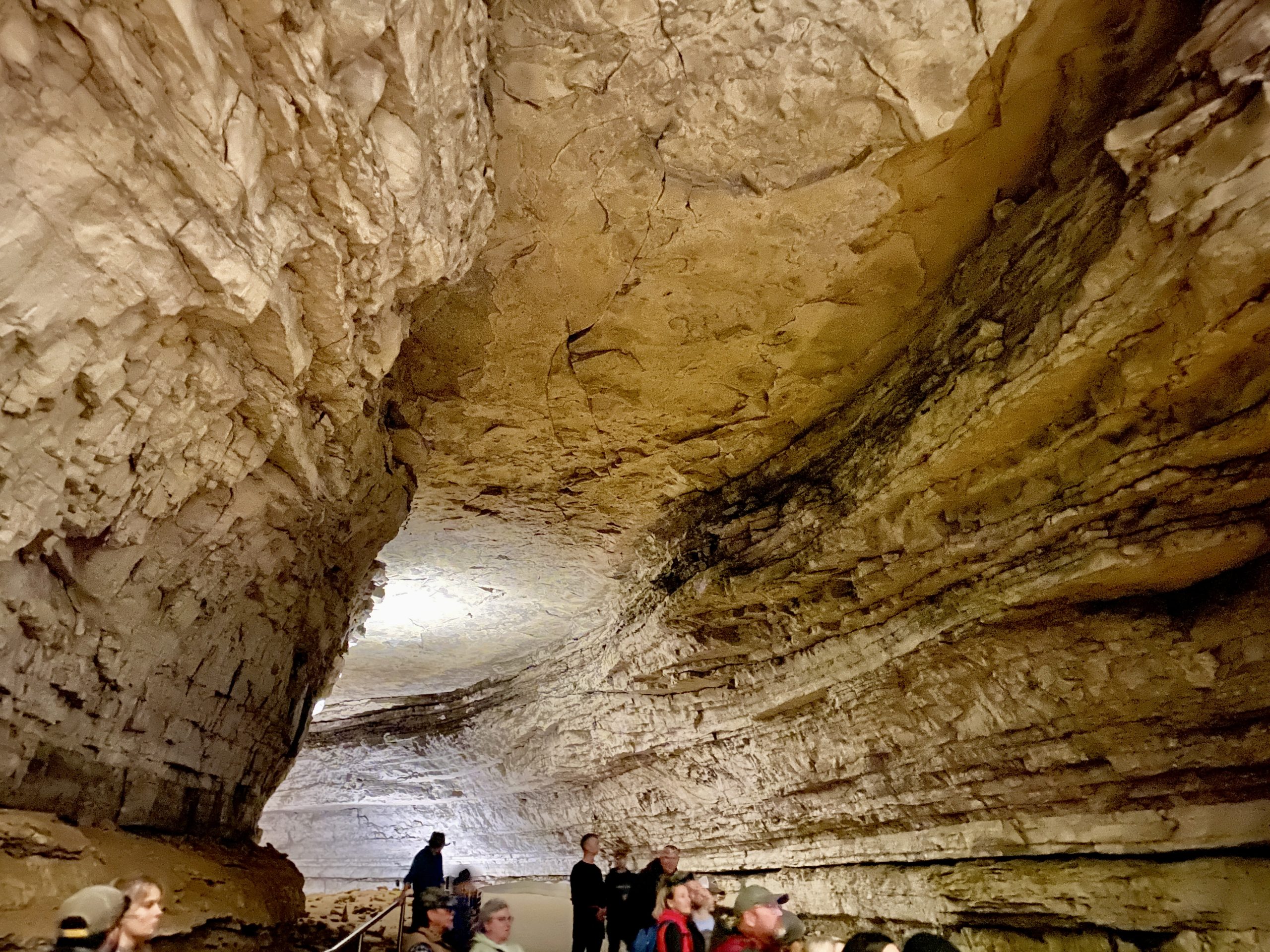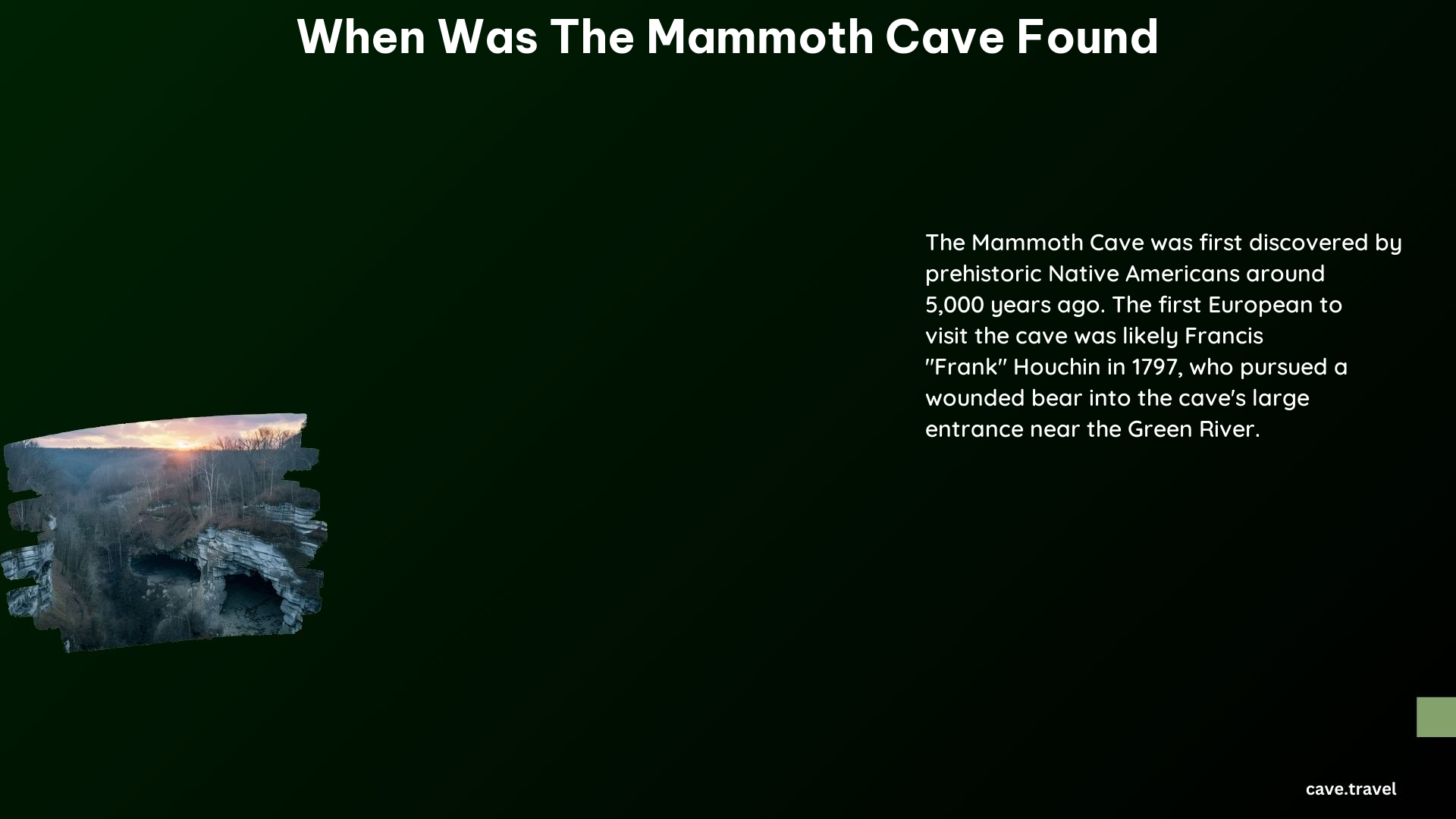The Mammoth Cave, one of the world’s most extensive cave systems, has a rich and fascinating history that dates back thousands of years. Discovered by Native Americans around 5,000 years ago, this natural wonder has captivated the imagination of explorers, scientists, and tourists alike.
The Discovery of Mammoth Cave

The Mammoth Cave was first discovered by Native Americans around 5,000 years ago. The cave was known to early European settlers, and the first written records of its discovery date back to 1797 when John Houchin or his brother Francis Houchin, while hunting, pursued a wounded bear into the cave’s large entrance opening near the Green River.
Early Exploration and Exploitation

After its initial discovery, the Mammoth Cave quickly became a popular destination for early settlers and explorers. In the early 19th century, the cave was used for a variety of purposes, including as a source of saltpeter, which was used in the production of gunpowder during the War of 1812.
| Year | Event |
|---|---|
| 1816 | The first commercial tour of the Mammoth Cave was conducted by a local guide named Stephen Bishop. |
| 1838 | The Mammoth Cave Hotel was built, providing accommodations for the growing number of visitors to the cave. |
| 1841 | The first scientific exploration of the Mammoth Cave was conducted by geologist and naturalist, Alexander Bullitt. |
Scientific Exploration and Mapping
As the Mammoth Cave’s popularity grew, so too did the scientific interest in the cave. Over the years, numerous expeditions and surveys have been conducted to explore and map the vast network of underground passages and chambers.
Key Milestones in Mammoth Cave Exploration
- 1838: The first detailed map of the Mammoth Cave was created by surveyor and explorer, Stephen Bishop.
- 1908: The Mammoth Cave National Park was established, helping to protect and preserve the cave system.
- 1972: The Mammoth Cave system was designated as a UNESCO World Heritage Site, recognizing its global significance.
- 2013: The Mammoth Cave system was officially recognized as the longest known cave system in the world, with over 400 miles of mapped passages.
Unique Features and Attractions
The Mammoth Cave is renowned for its diverse and awe-inspiring geological features, including vast chambers, intricate cave formations, and underground rivers and lakes. Some of the cave’s most notable attractions include:
- The Rotunda: A massive, cathedral-like chamber that measures over 200 feet in diameter and 192 feet in height.
- The Frozen Niagara: A stunning display of cave formations that resemble a frozen waterfall.
- The River Styx: An underground river that flows through the Mammoth Cave system.
- The Bottomless Pit: A deep, vertical shaft that extends over 105 feet down into the cave.
Preservation and Conservation Efforts
The Mammoth Cave’s status as a UNESCO World Heritage Site underscores the importance of preserving and protecting this natural wonder. Over the years, various conservation efforts have been undertaken to ensure the long-term sustainability of the cave system, including:
- Limiting the number of visitors to the cave to prevent damage and erosion.
- Implementing strict guidelines for tour groups and visitors to minimize their impact on the cave environment.
- Conducting ongoing research and monitoring to better understand the cave’s ecosystem and identify potential threats.
- Collaborating with local communities and stakeholders to promote sustainable tourism and environmental stewardship.
Conclusion
The Mammoth Cave’s rich history and unique geological features have made it a beloved destination for explorers, scientists, and tourists alike. From its initial discovery by Native Americans to its designation as a UNESCO World Heritage Site, the Mammoth Cave continues to captivate and inspire all who venture into its vast and mysterious depths.
